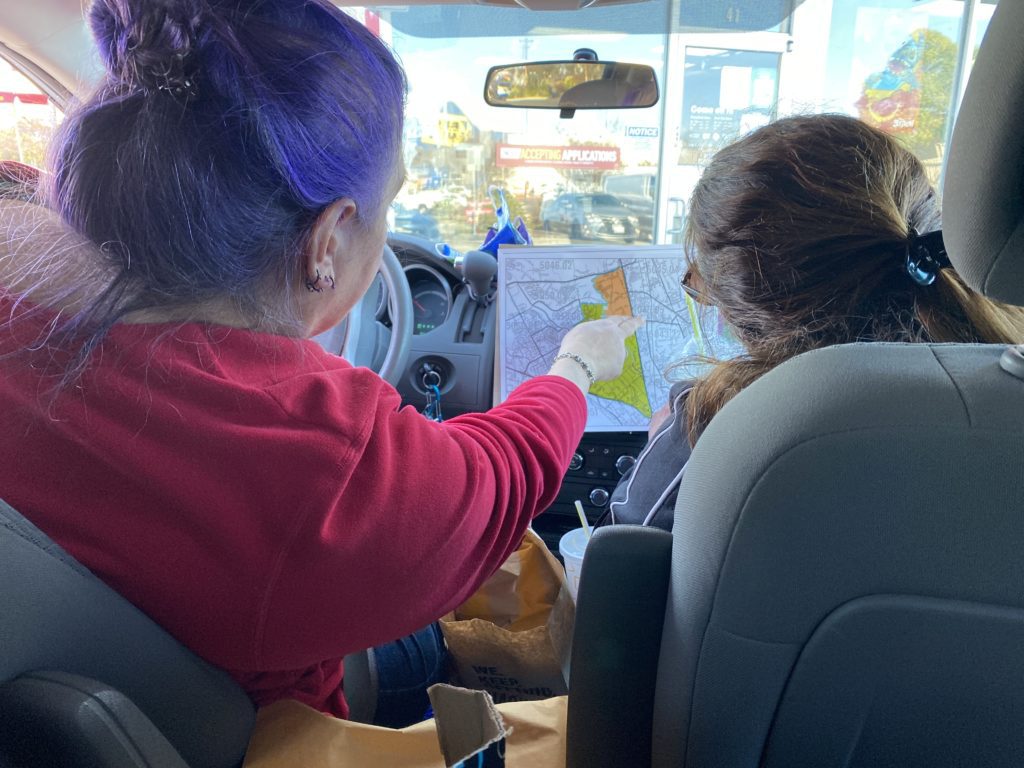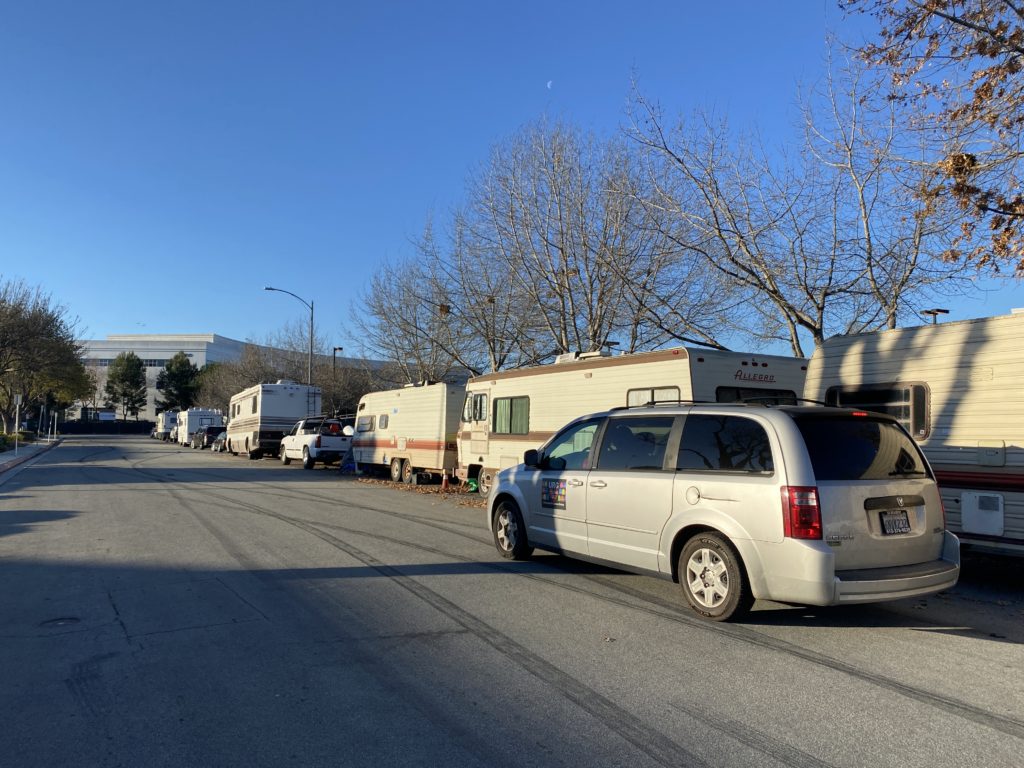Geneva Strickland used to bounce from one street to another in North San Jose for more than six years before she found housing. On early Wednesday morning, Strickland came back to her old stomping ground with new purpose—to count the number of people who are still homeless.
“I want to give back,” Strickland told San José Spotlight as she logged the information of a mobile home. “I can’t forget how hard it was out there. I wouldn’t make it if I didn’t end up in housing.”
Strickland and unhoused advocate Shaunn Cartwright were among 220 people who woke up before dawn to hit the streets in 30-degree weather, scouring under bridges, along creeks and outside businesses to count homeless people living in San Jose. The two-day event continues Thursday in Santa Clara County cities such as Sunnyvale, Mountain View and Cupertino.

The biennial count—known as the “point-in-time” homeless count—is critical for officials, nonprofits and advocates to understand the homelessness crisis and identify the needs of people on the streets. The count is part of a federal requirement for Santa Clara County to receive funding. The county opted to defer the 2021 count due to COVID-19 and postponed this year’s count by a month over COVID concerns.
Santa Clara County, one of the wealthiest counties in the state, faced a reckoning in 2019 when it saw the number of unhoused people on its streets jump 31% compared to the 2017 count—from 7,394 people to 9,706. San Jose saw an increase of 42% over the same period, according to the 2019 count.
Advocates and unhoused people said the crisis has only gotten worse with the pandemic that upended the lives of thousands of people in Silicon Valley. While the county reported roughly 6,000 people have been lifted off the streets since January 2019, residents are still falling into homelessness faster than the county can house them.

A conservative count
With the latest data being three years old, the region doesn’t have a clear picture of how bad the homelessness crisis has grown. Even with the 2022 count, some worry it will leave behind many people.
“Whatever we count today, that’s a conservative number of people who are actually unhoused,” Cartwright said. “There are at least two people in every RV, and I’ve seen as many as 10 people sleeping in the same RV before.”
Cartwright and Strickland spent hours driving the streets—sometimes venturing onto bike trails along the creeks—of Alviso and parts of North San Jose to find the most vulnerable.
“You don’t want people to be able to see you and come bother you,” Strickland said. “But you don’t want to be so far out in the wilderness either. It’s so rough out there, especially for women.”
Strickland logged as many as 80 vehicles and tents until her phone died. They ended up tallying roughly 100 RVs, trucks and makeshift structures lining the streets and hiding along the creeks.
Near downtown, San Jose Mayor Sam Liccardo joined nonprofit PATH San Jose to conduct a count. Councilmember Matt Mahan and his office also covered two census tracts.
“I’m sure the results of the census won’t be shocking—San Joseans can see everyday that the problem is getting worse,” Mahan said in a tweet. “No one should live on the streets in (San Jose), whether it be due to lack of options or by choice.”
This morning, my team and I got up at 4:30am to participate in the biennial homeless census. We surveyed two census tracts, tallying encampments so that our local governments have an accurate count of our homelessness population. (1/2) pic.twitter.com/Nxvxt0sCWk
— Matt Mahan for Mayor (@MattMahanSJ) February 23, 2022
The numbers will help inform local lawmakers on how to best offer services, county officials said. Santa Clara County and San Jose have raced to build more interim and permanent housing through different initiatives to lift people off the streets with billions in unprecedented funding from the state and a $950 million housing bond approved by voters in 2016.
The waitlists for those spots are long, and many of them also come with restrictions and rules such as curfews and limited visiting hours that don’t make sense to some unhoused residents.
John Connery, who’s leading the census effort for Applied Survey Research, said this year’s count required more planning as the group opted to forgo a deployment center and kick-off event. Many officials from the county and cities were joined by nonprofits such as Downtown Streets Team, Bill Wilson Center and PitStop Gilroy.
The group will also conduct follow up surveys to better understanding a person’s situation and what potential services might be needed. The result of the tally and surveys will come out this summer, Connery added.
Contact Tran Nguyen at [email protected] or follow @nguyenntrann on Twitter.



Leave a Reply
You must be logged in to post a comment.